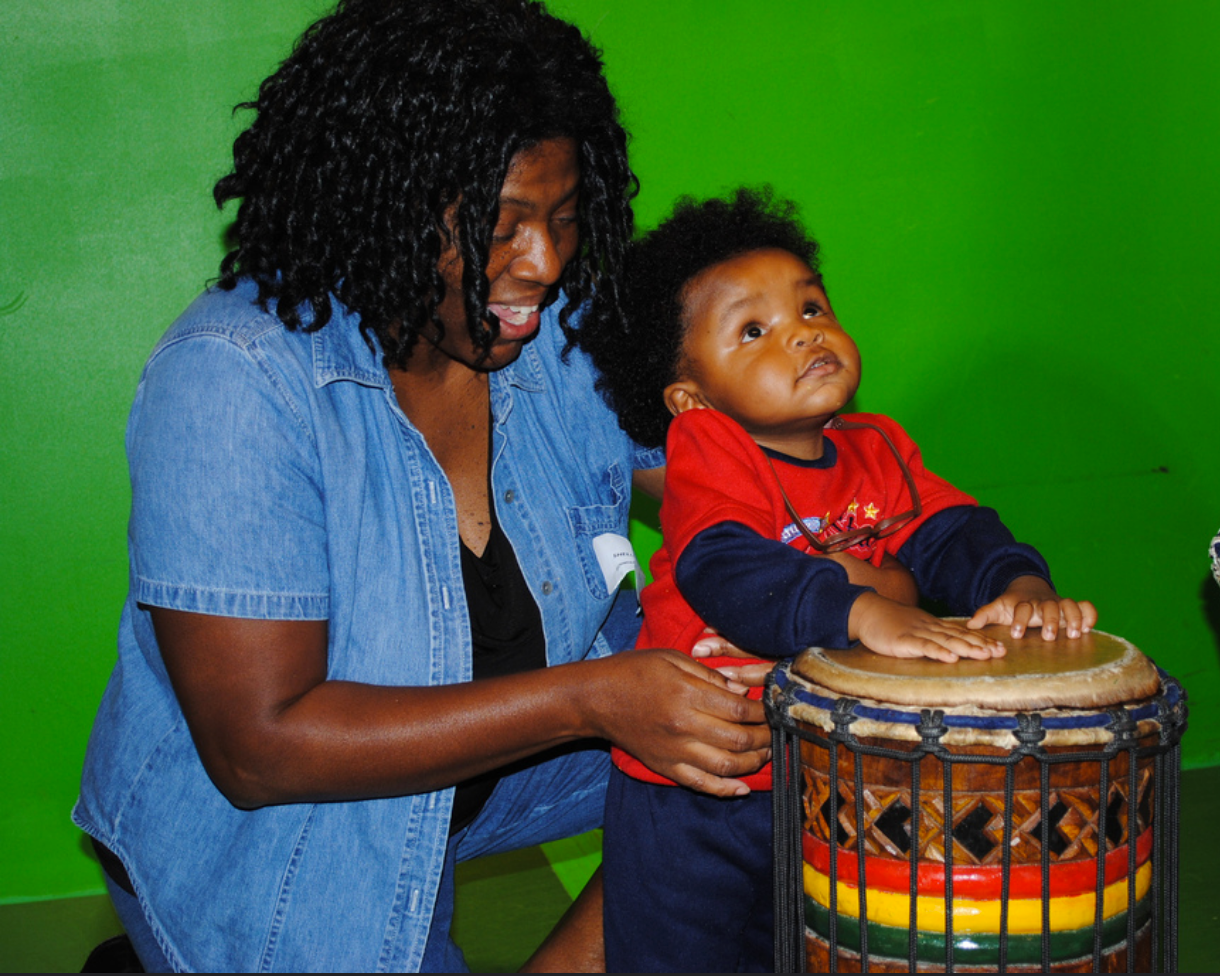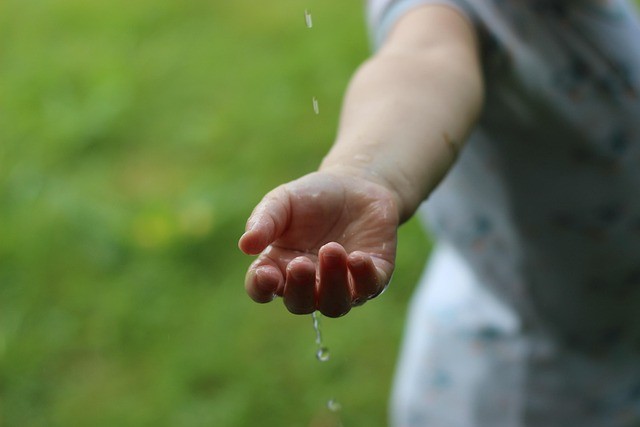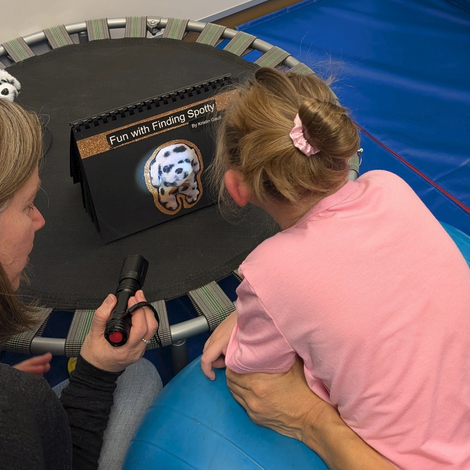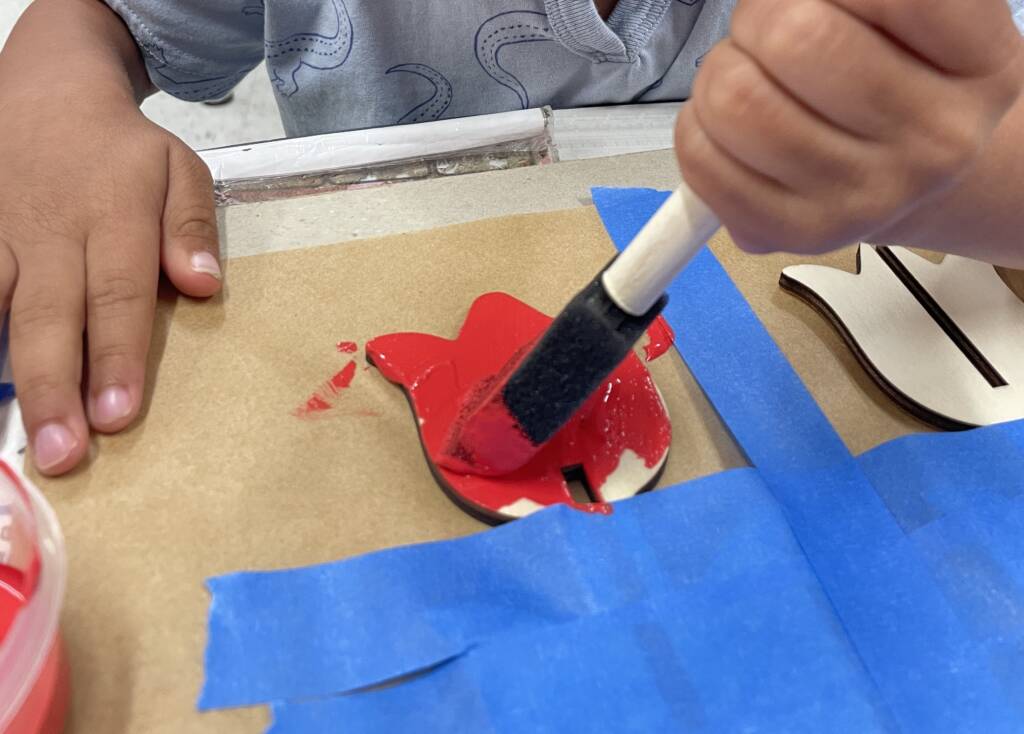Compiled by Kari Arnold and Susiene Royson
There are endless possibilities for children to learn new skills at home and in the community. Here are some ideas for families to try in different learning environments. Have fun exploring!
Home
Kitchen
- Independent exploration: Create a cupboard that has safe items for child to explore: plastic bowls, wooden spoons, plastic measuring spoons, plastic measuring cups
- Sink play: Help child explore the wonders of water by playing in the sink. Model pouring water from a cup to another item. Make bubbles with dishsoap. Model how to wash dishes. Use food coloring to make the water different colors. Use different temperatures of water to talk about hot and cold. Use ice cubes to teach the concept of melting.
- Basic cooking: use picture symbol recipe cards (can be braille) and develop “kitchen” vocabulary: stir, pour, whip, add, ingredients. Let child assist in simple cooking activities. Give them their own set of play kitchen items for pretend play.
- Let children sort and fold laundry (color, size, towels vs. clothes). Allow child to put clothes in washer and/or dryer, put clothes away, or put clothes in the room of the person they belong to.
- Sensory experiences – Put pudding and other foods in Ziploc bags and containers and let them squeeze, squish and shake.
- Stack rolls of toilet paper or rolls of paper towels.
- Use a child’s broom and have child help sweep the kitchen floor.
Bathroom
- Have the child assist in taking off shirt, pants, shoes, and socks.
- Water play: In the bathtub, pour water into different size/shape containers or move hand/legs slow/fast. Use bubbles and various toys and allow for supervised, independent play.
- Body awareness – use a washcloth to learn body parts by saying, “put the wash cloth on your knee, etc.” Use bathtub body paints to learn body parts and/or colors by saying put a blue dot on your hand, etc.
- Mirror exploration: Have the child copy facial expressions. Talk about happy, sad, mad, surprised, etc.
Family Room
- Take out and clean up toys (pictures/tactile labels of toys labeled on shelf/in cupboard where toys go)
- Interactive play with members of the family – roll a ball, read a story, play a game, sing songs, repeat nursery rhymes, finger play, explore and interact with toys, share, take turns, and have a conversation.
- Put different sized, different colored items on the floor and supervise as the child searches for and picks up items and places them into a small container.
- String various sized items onto a string or use snap beads to create a necklace.
- Let the child color in a coloring book. (If you don’t want to use crayons, you can use colored pencils or scented markers.)
- Have the child turn the pages of a book one page at a time. (board books for infants and other books for toddlers)
- Use a small box or container and let the child push small trucks or cars into the “garage”.
- Ask the child to find parts of pictures and find them in a book.
- Make a book of pictures of friends and relatives and talk about and point to people in the pictures. Ask the child questions about the pictures. For example, “Find grandma” or “Who is sitting on the bike?”
- Make story boxes/bags for hands on literacy experiences. Find items that relate to the story. For example, for the book The Very Hungry Caterpillar use a plastic Easter egg, toy food items and silk plant leaf. Model play with the items as the story is read.
- Create/use books with textures, sounds, scratch and sniff and flaps that cover parts of pictures.
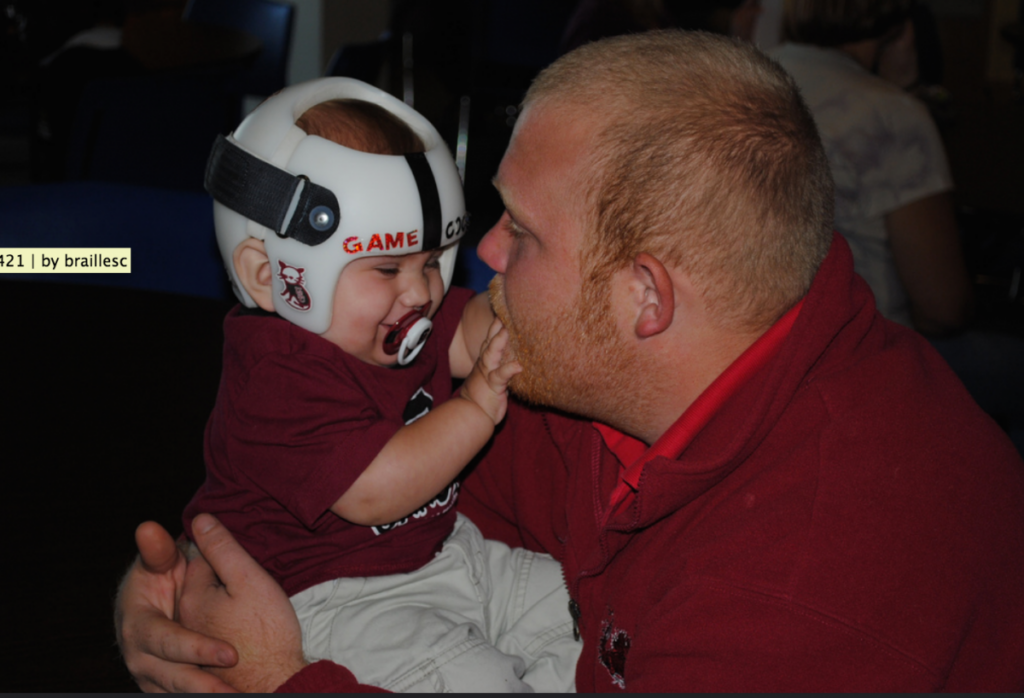
Outdoors
- Explore outdoor textures: sand, grass, tree bark, flowers, and leaves. Use words like soft, rough, smooth, bumpy, etc.
- Auditory experiences: birds, insects, flies, bees, cars, trucks, dogs, sprinklers, etc. Ask the child, “What do you hear?” Have the child point in the direction of the sound.
- Spend time in the sun and shade. Then describe and talk about the weather every day. Use words like hot, shady, wet, breezy, etc.
- Sand box/water play: pour water/sand into different size/shape containers. Place a variety of toys in the sand to scoop, sift, and play. Hide items in the water/sand and ask the child to look for them.
- Play with bubbles. Have the child follow them and try to pop them.
- Model sweeping and provide a child-sized broom for child to practice.
- Have child help plant flowers and/or seeds. Allow them to help with every aspect of care: water, weed, pick, etc.
Community
Grocery Store
- Talk, talk, and talk. Describe every part of the experience. For example, “We are going into the fruit section. It smells good.”
- Before putting an item in the cart, hand it to the child and describe it and tell them to feel, smell etc. If it’s several items, let them put the items into the produce bag.
- Direction: Develop position skills by saying right, left, up, down, over, aisle, top/bottom, row etc.
- When checking out, let child help put items on the belt.
- When paying, talk about money and the cash register.
Park/Playground
- Supervise while the child explores independently.
- Model and practice gross motor skills – running, jumping, climbing etc.
- If other children are playing, foster interaction and social exchanges.
- Help the child develop awareness of their self in space. Describe the experiences. For example, we are climbing up the slide and now we are going down. When we swing, we go back and forth.
- Let the child get on and off equipment independently, monitoring closely for safety.
- Walk over different types of surfaces, such as grass, pavement, wood chips, curbs, etc, describing the changes in the surfaces.
- Pick flowers, acorns, leaves, etc so the child learns where items on the ground come from.
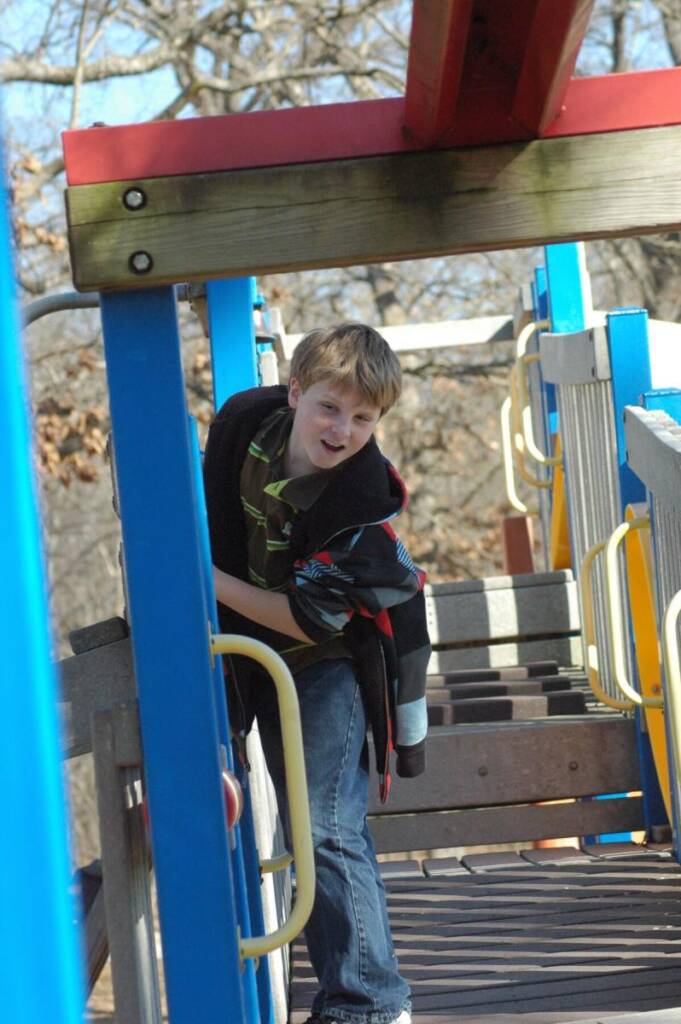
Library
- Attend story time at the library to develop listening skills as well social interaction with other children.
- Ask the library if they have a section for large print, tactile and/or braille books for children. If not, ask them if you could have a small section to put some items so when the child comes, there are accessible books for the child to check out.
- Check out audio books and practice listening skills and page turning.
- Record your child’s favorite books.
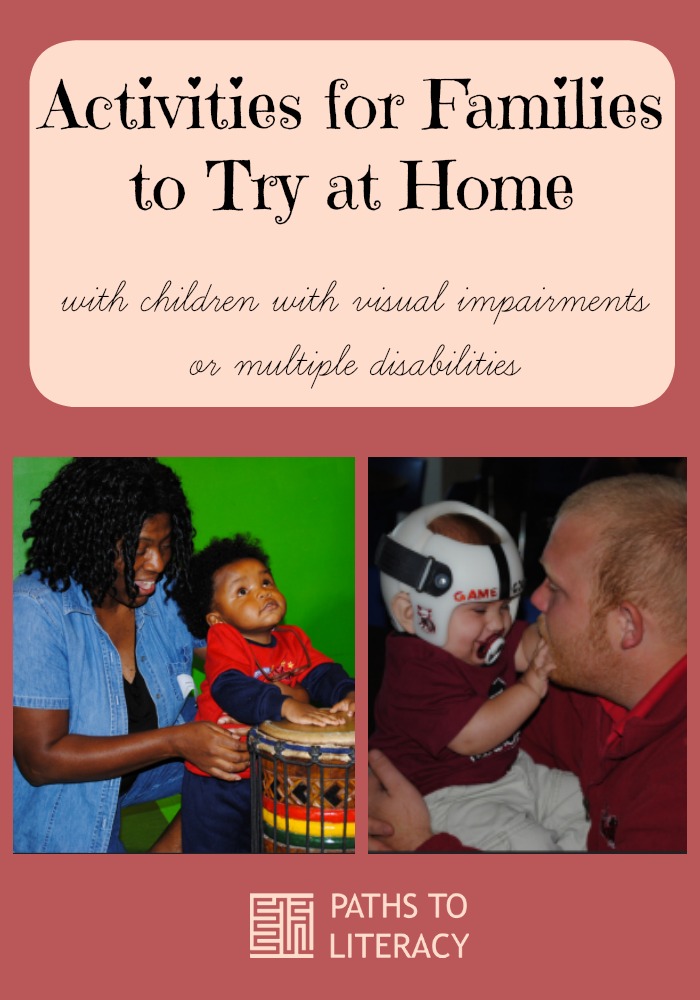
This article was originally posted on the BrailleSC website, which was funded by a grant from the US Department of Education with support from the University of South Carolina Upstate and The Maryland Institute for Technology in the Humanities.

